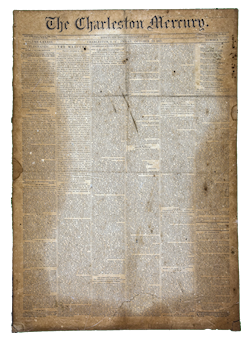March 20, 1863, The Charleston Mercury
This gun, which was introduced by the French Emperor into service, as superseding all other smooth bore field artillery, is a lighter gun than the former twelve pounder, and thus capable of being manoeuvred by six horses on the field. It has a smaller charge of powder than the old twelve pounder, and is employed to project either shot or shell; hence called by the French ‘Gun Howitzer.’ This gun, by order of the Ordnance Bureau, is to supersede all other smooth bore field artillery in the Confederate service, which latter will be accordingly gradually withdrawn and replaced as above. These guns are now being manufactured rapidly at the Government foundry and machine works in Augusta, Ga., which will soon be able to cast and complete one every twenty-four hours. Experiments are now being made, under the direction of Col. RAINS, on the new Austrian gun metal, which is a combination of bronze, zinc, and wrought iron, and some guns have already been made for trial. The metal is exceedingly tough, hard, and elastic. The gun carriages, caissons, travelling forges, and battery wagons are fully equal, in quality and workmanship, to any made in the Federal service. It is designed to make the Government Works at Augusta a great arsenal of construction, where ammunition, field and siege artillery, projectiles, and ordnance stores in general, will be made in large quantities, for the use of the army. The powder works are daily increasing in capacity when finished, will be the largest works of the kind existing. They are now superior to any known, possessing all the improvements that experience suggested, many of which are due to Col. RAINS, who has considerably furthered the process of manufacturing powder, the quality of which is fully equal to the best standard of European and Federal works, proved by tests made with the ballistic and gun pendulums. The productions of these works have already exceeded the entire cost, and saved the Government nearly two millions of dollars.
